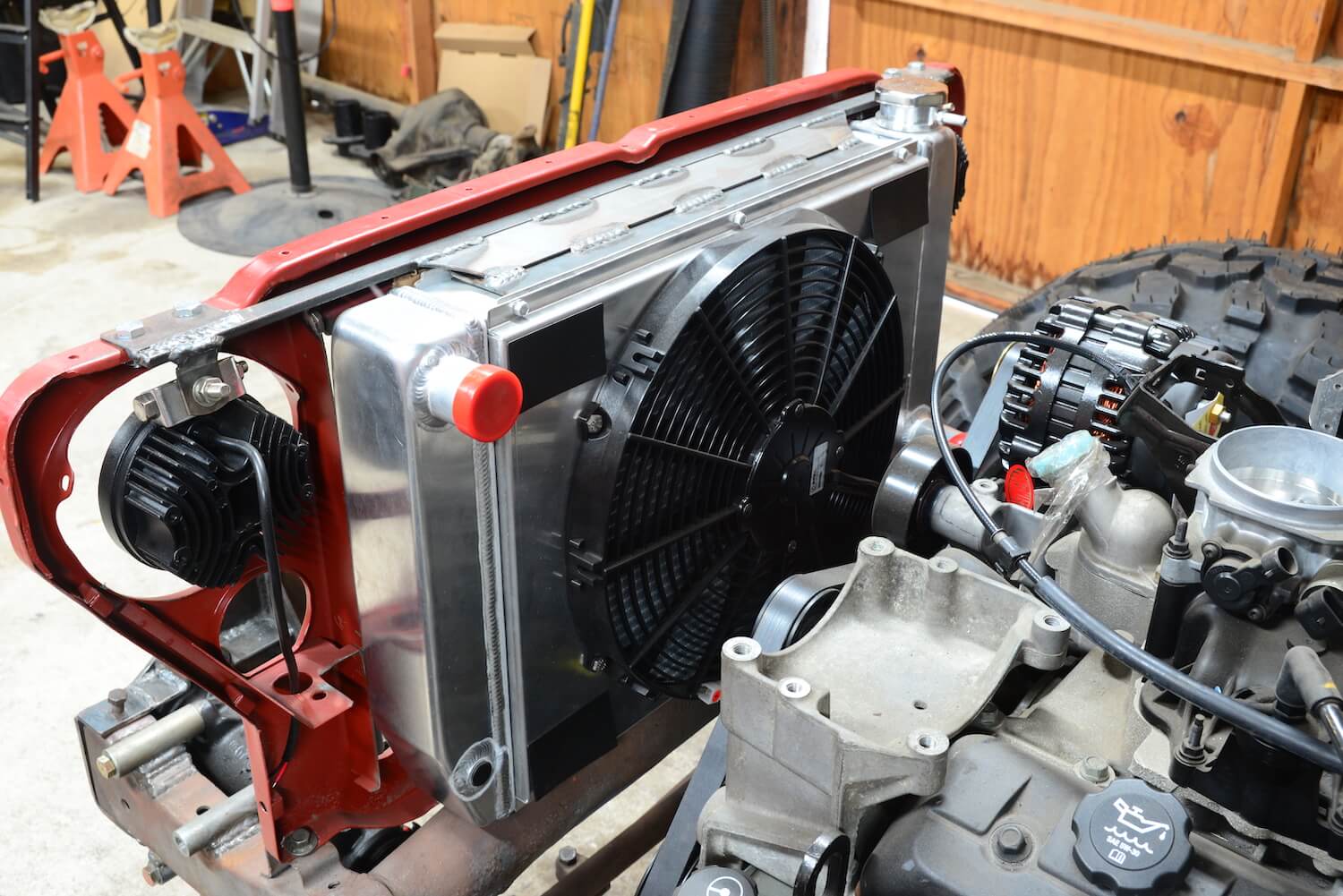
Photography by John Cappa and Courtesy of the manufacturers
An overheating 4×4 is the last thing you probably think about when you hit the road or trail. The cooling system of most vehicles works fine without much maintenance until it doesn’t. No matter if you have a gas or diesel power plant, your engines cooling system is very simple and only has a few main components. Waste heat from the engine needs to be wicked away. Fluid (a coolant and water mix) is pumped through the channels in the engine block and heads where it absorbs heat from the engine components. The hot fluid then flows into a radiator, where the heat is transferred to the radiator fins. Airflow through the grill passes over and cools the radiator fins. The fluid is then fed into the water pump where it starts the engine cooling process all over again.
Overheating issues can be caused by an engine problem or by clogged, worn, broken or mismatched cooling components. Overheating can also be the result of some completely unrelated modification you have made. Many overheating issues happen quickly without warning, while the root of other cooling issues may go unnoticed for months until specific conditions occur, such as towing uphill in triple-digit summer temperatures. There are some basic principles that you can follow when diagnosing an overheating issue and several aftermarket parts that can help keep your machine out of the red zone. The first step is to make sure your engine and the cooling system components are in good operational condition. This includes the radiator, hoses, belts, fan, fan clutch, water pump and thermostat.
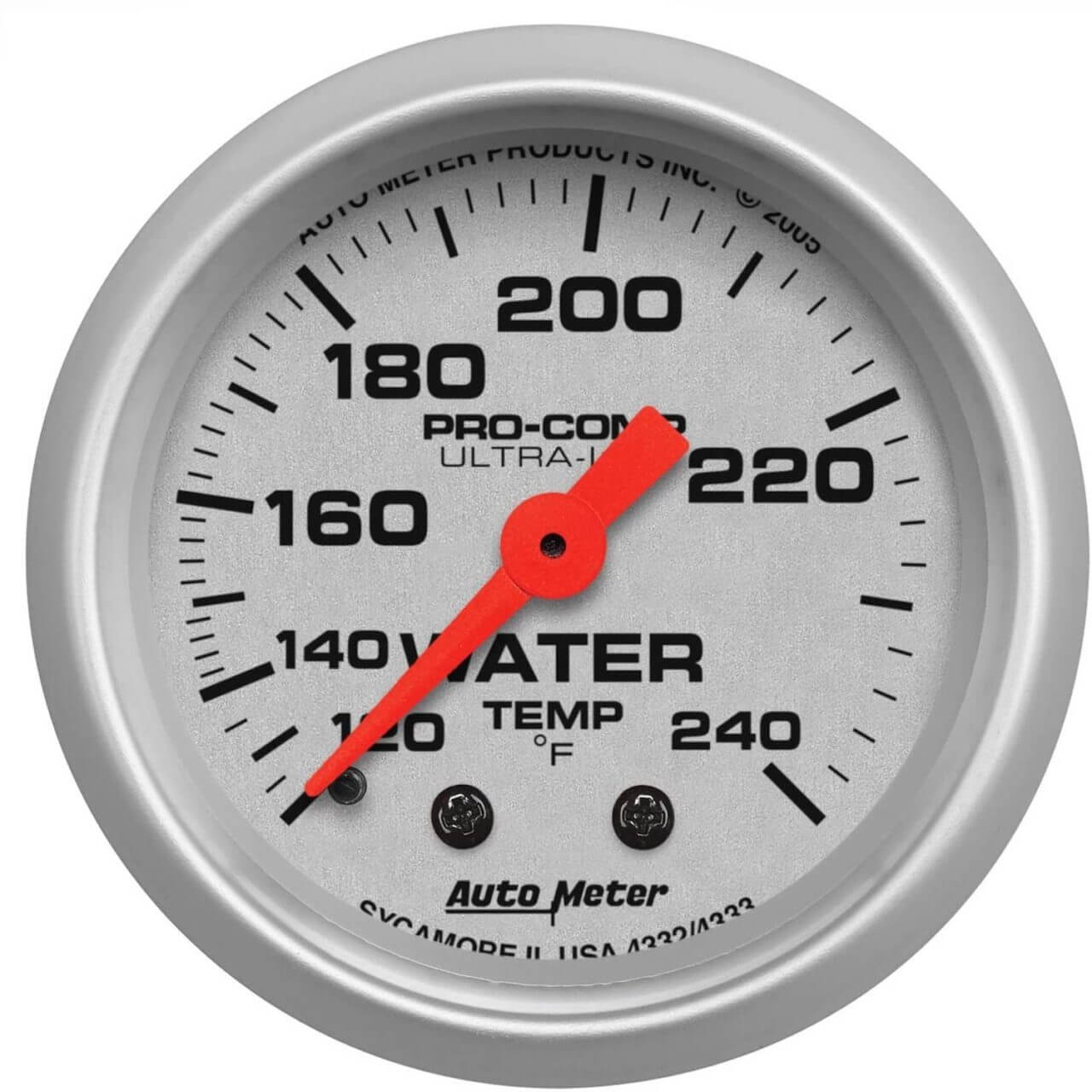
Most of the factory gauges are vague at best. An aftermarket water temperature gauge can help you figure out what temperature your engine is really running at. If your dash is tight for space, you can temporarily mount the temperature gauge until you find and fix the cooling issue.
Aftermarket Temperature Gauge
The factory gauge clusters on most trucks and SUVs leave a lot to be desired. Many don’t even have actual temperature numbers, just a vague H (hot) and C (cold) and sometimes a red zone that you want the gauge needle to stay out of. The only real way you know the engine is overheating is if there is steam billowing out from under the hood. If you suspect your 4×4 has an overheating problem, the first place to start would be to install a temperature gauge with actual numbers, even if it’s only a temporary installation. With a gauge in place you have a much better idea of if, when and why the engine is getting warm. Older non-electronic engines typically run best at 160-180 degrees, while modern engines normally run at 195-215 degrees. If your engine and cooling system are in good operating condition and the water temperature is consistently at 220-230 degrees or higher, you should look into some overheating preventatives in the form of aftermarket parts.
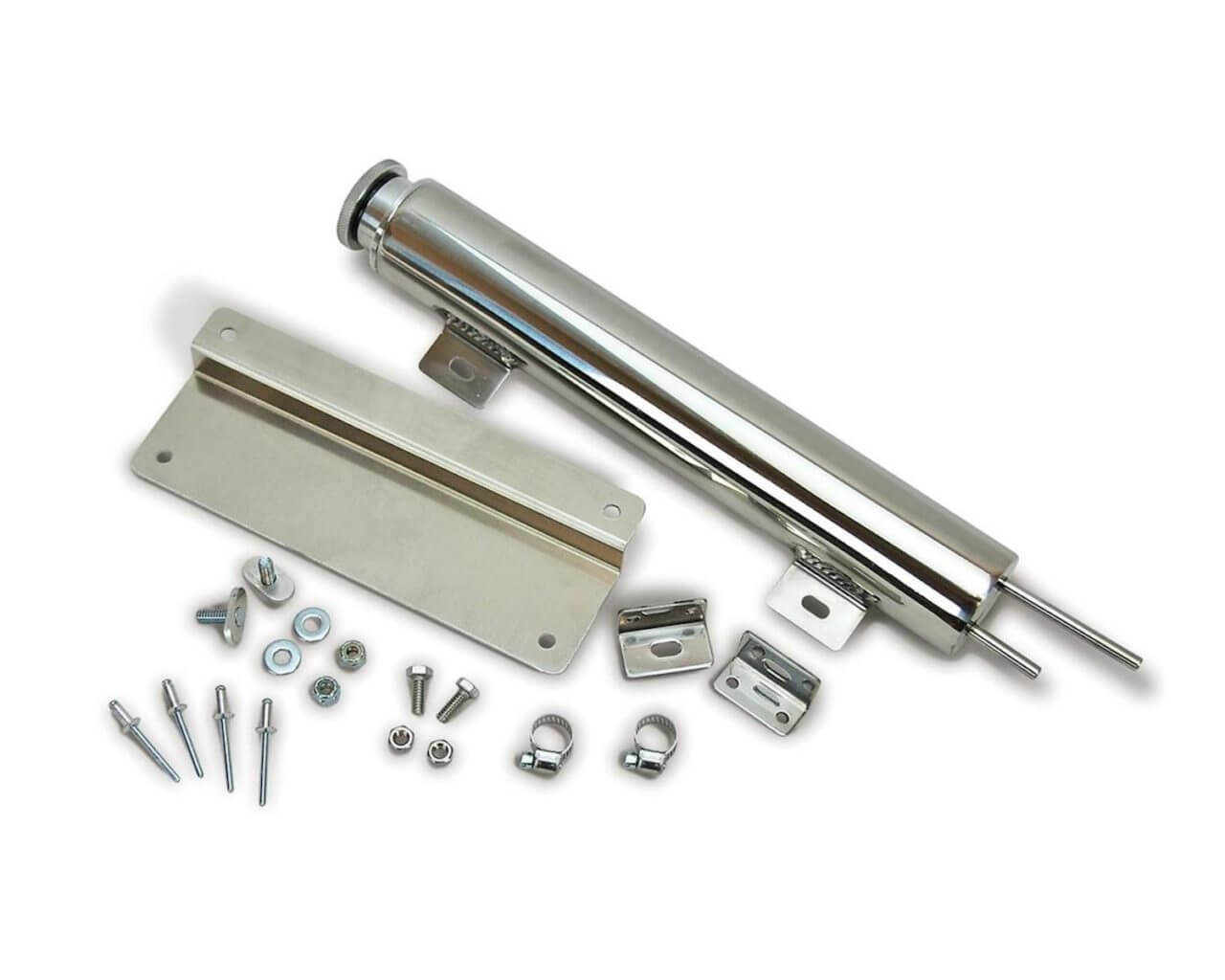
A properly functioning radiator overflow tank helps keep air out of your cooling system. The OE radiator overflow tanks made of plastic can crack and leak over time. An aftermarket aluminum tank will last forever, and it looks a lot sharper than broken plastic.
Aftermarket Radiator Overflow Tank
As the water and coolant mixture in your engine’s cooling system heats up, it expands. It needs somewhere to go so that when the engine cools off again the fluid can be sucked back into the system. If the fluid is simply allowed to expel into the environment, the cooling system will draw air in as the fluid cools after shutdown. Air in the cooling system makes it less efficient. Most factory-style radiator overflow tanks work fine, but they are typically made of plastic and can crack and leak with age. Aftermarket universal and vehicle-specific radiator overflow tanks are available to help keep your cooling system purged of air and functioning at full potential. Many of these overflow tanks are made from polished or anodized aluminum, so they add some sparkle under the hood too.
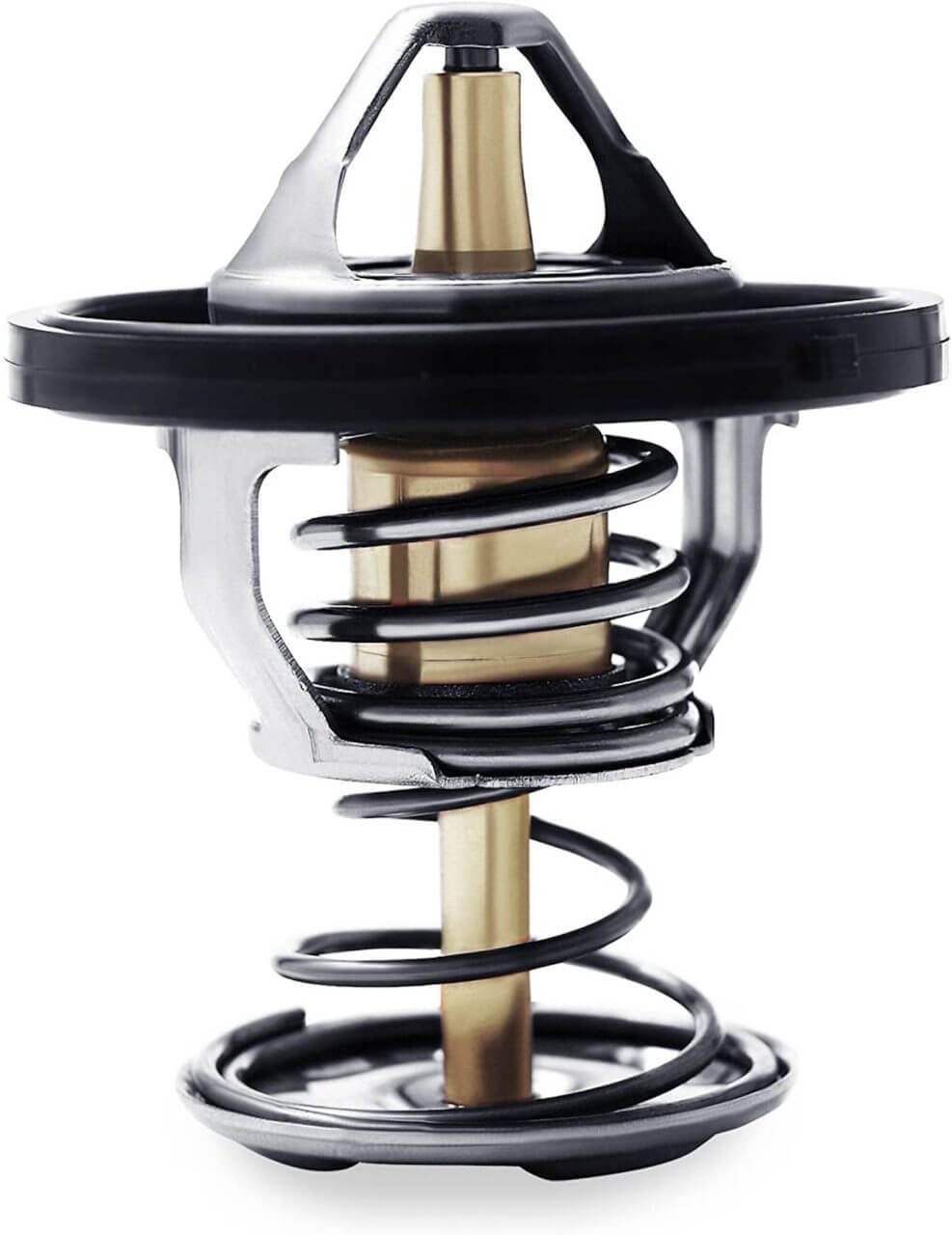
Sometimes moving just a bit more coolant through the engine at a slightly lower temperature is enough to keep the cooling system from overheating. An aftermarket high-performance thermostat is an easy and inexpensive upgrade that can do just that. Different lower than stock temperature thermostats are available for many different applications.
Aftermarket High-Flow Thermostat
Modern engines typically run at 195 degrees or warmer for fuel efficiency and smog reasons, but it doesn’t leave a lot of leeway for overheating. Hitting 220 to 230 degrees consistently is not at all ideal on most engines. Sometimes engine performance upgrades or extreme driving conditions require just a bit more cooling efficiency than what the stock cooling system provides. This can often be accomplished with an aftermarket high-flow thermostat. Not only will it open up at a slightly cooler temperature than stock, some allow for increased fluid flow. A 10 to 15 degree drop in coolant temperature may not sound like much, but it could mean the difference between you continuing on your way up a grade and you having to pull off to the side of the road until your engine cools down.

Towing and off-roading can put a lot of stress on the engine and cooling system. Aftermarket aluminum radiators feature increased cooling capacity and are built more robust than the factory radiators found in most 4x4s. Vehicles with engine swaps almost always benefit from the installation of an aftermarket aluminum radiator.
Aftermarket Aluminum Radiator
Significantly increasing power output or swapping in a larger engine typically requires a cooling system upgrade, such as an aftermarket aluminum radiator. Even replacing a damaged or clogged factory radiator with a heavy-duty aftermarket aluminum radiator is a sound upgrade for any 4×4 or tow vehicle. Aftermarket aluminum radiators are available in a variety of shapes and sizes. There are many that are designed to be completely bolt-in. Aftermarket aluminum radiators feature increased cooling capacity thanks to a thicker core with more cooling surface area. Most aftermarket aluminum radiators also feature a more robust design than the factory radiators, which often feature crimped-on plastic tanks that will fail and leak with time. The welded-on tanks found on aftermarket aluminum radiators can handle the rigors of off-road use better than the factory plastic tanks.
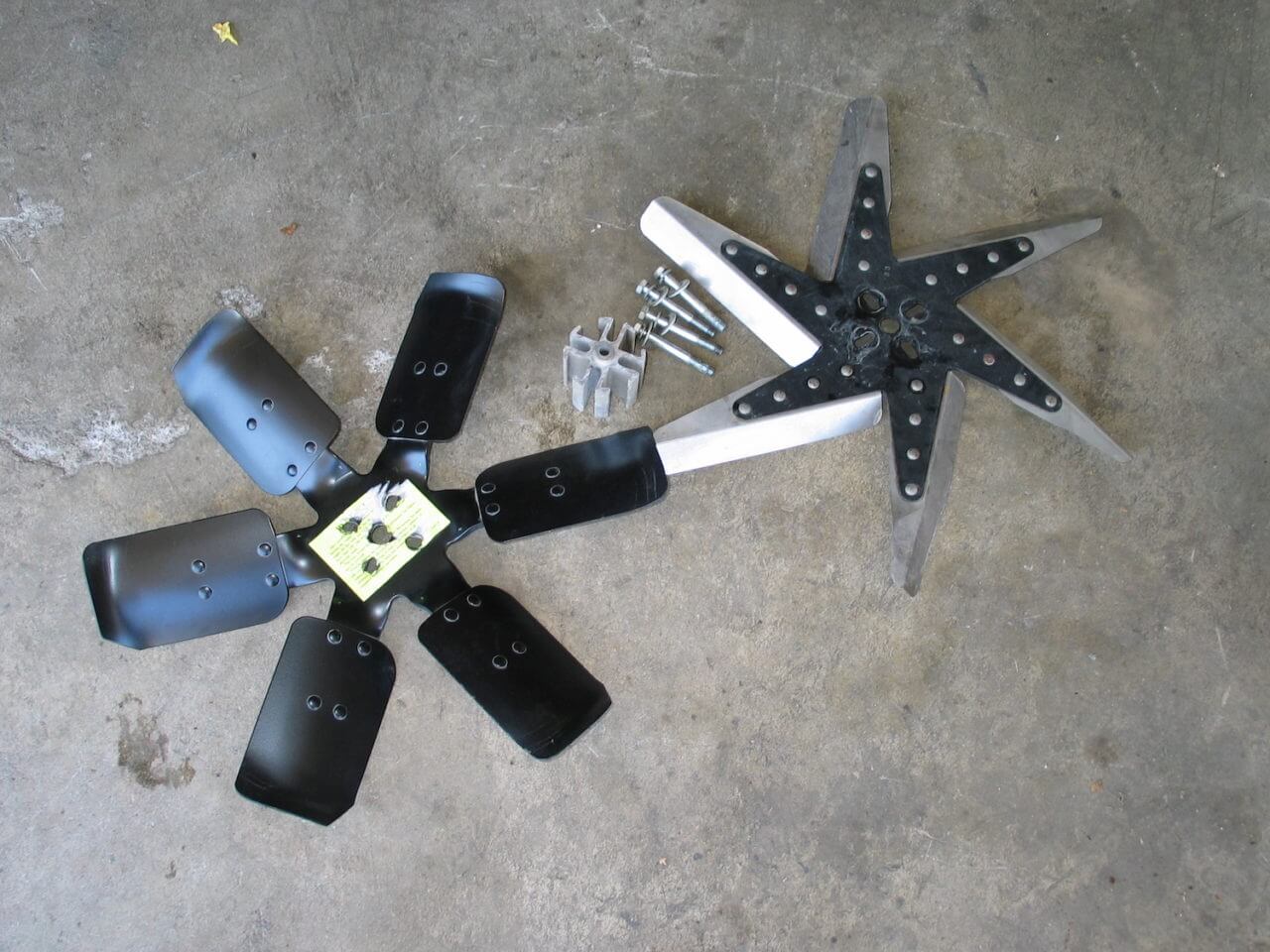
The steel engine-driven race fan on the left will move a lot more air through your radiator than the flex fan on the right. Flex fans were originally designed for street racing applications. They reduce parasitic drag at higher rpm, but to do so they pull less air through the radiator, which decreases cooling potential.
Aftermarket Rigid Race Fan
Traveling at slower speeds at higher engine rpms creates a lot of heat under the hood. This would include driving off-road in low range, excessively spinning tires in the sand or mud and towing heavy loads up steep grades. Airflow through the grill and radiator is significantly decreased because of the reduced speed. Unfortunately, these situations are when increased airflow is needed most. Vehicles with a factory rigid fan and a properly functioning fan clutch should be fine. These systems move massive amounts of air when it’s needed, regardless of engine rpm.
Avoid the use of a flex fan on a pickup or SUV that goes off-road or tows. As the name implies, flex fans are designed to deflect at higher rpms to reduce parasitic drag, which also reduces airflow at higher engine rpms. If your fan is mounted directly to the water pump without a fan clutch, consider the use of a high-cfm race fan. These fans feature rigid blades that won’t flex at higher engine rpm. Race fans move lots of air to help keep the engine cool at both idle and high rpm. Match up your fan diameter with a proper fan shroud for best results.
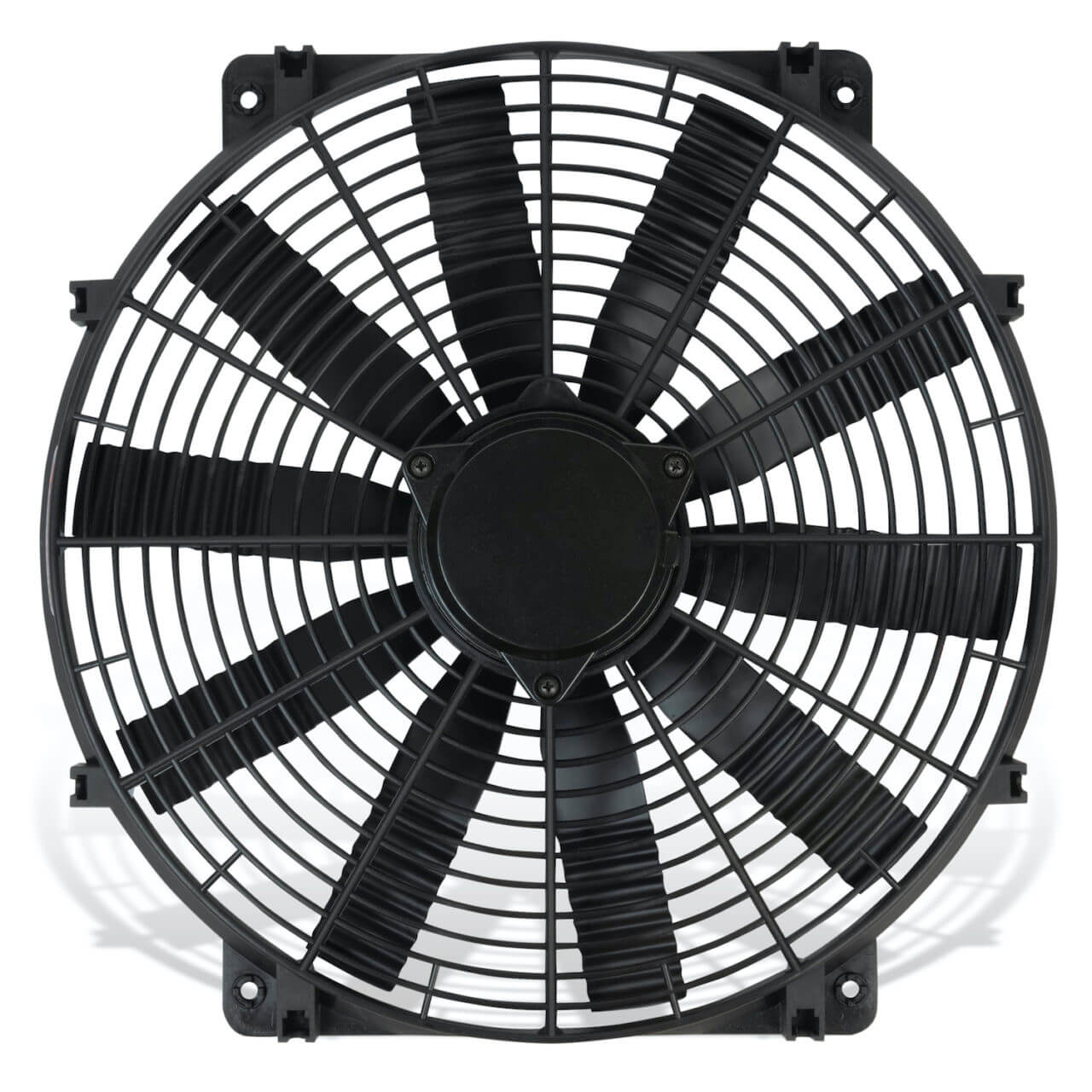
Aftermarket electric fans are available in many different shapes and sizes including vehicle-specific bolt-on applications. They move lots of air regardless of engine speed, increase fuel economy and help free up a few extra horsepower at the crank.
Aftermarket Electric Fan
Aftermarket electric fans typically feature a lower profile than traditional belt-driven engine cooling fans, making them a great option for vehicles with engine swaps and not a lot of underhood real estate. Electric fans can also be used to replace traditional belt-driven fans to free up some horsepower and increase fuel economy. The downside is that most electric fans don’t move as much air as a typical belt-driven fan. Keep in mind that electric puller fans mounted on the backside of the radiator are far more efficient than electric pusher fans mounted in front of the radiator. You have to be careful when selecting an electric fan to be used as a primary radiator airflow source. Some low-cost electric fans aren’t able to move the air required to keep an engine cool. Fortunately, there are many powerful bolt-on vehicle-specific electric fan conversion kits available for popular trucks and SUVs.
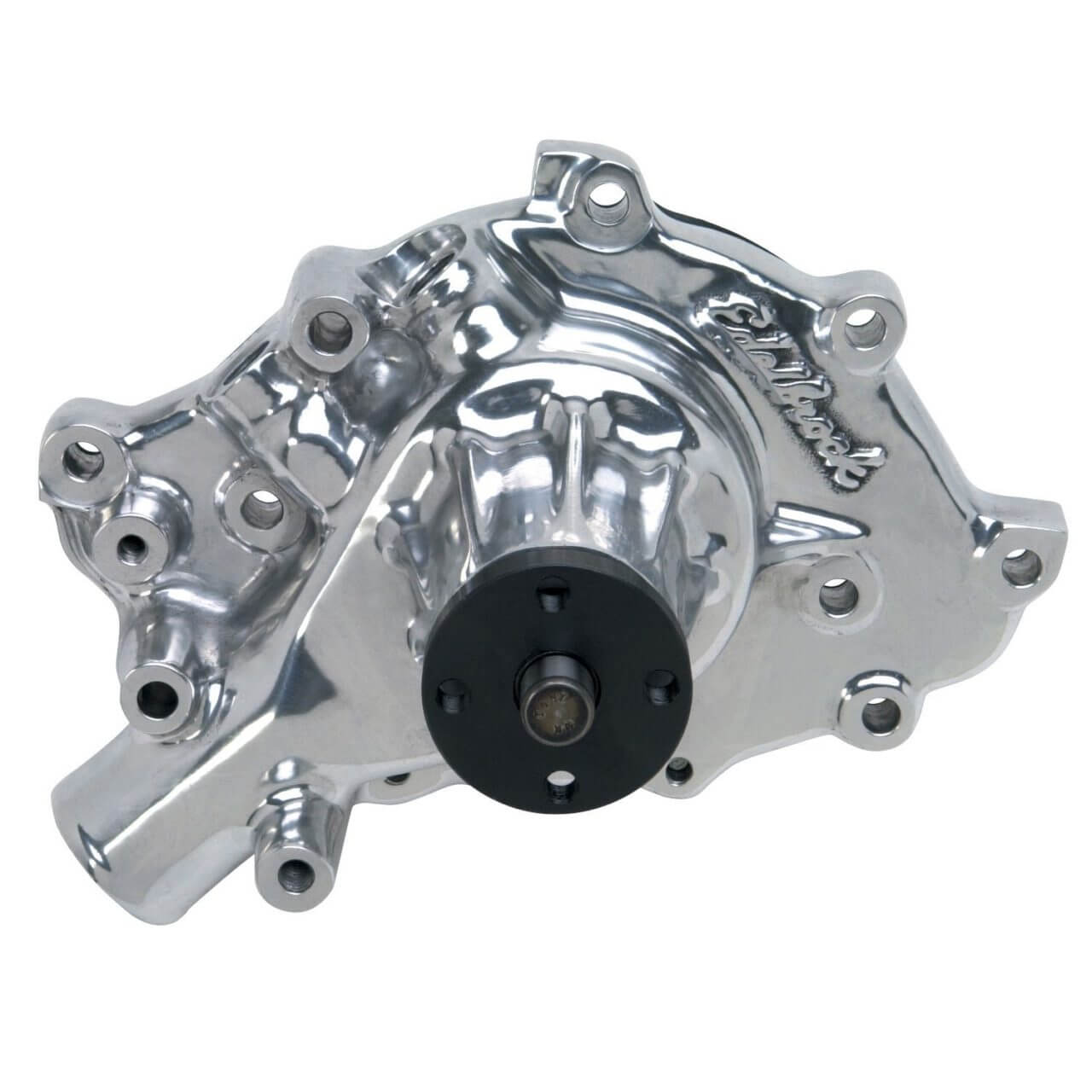
High-performance water pumps are available for almost every popular engine and they are a direct bolt-on replacement. They feature balanced internal passages for maximum flow and equal coolant distribution into the engine. The larger than stock impeller vanes increase flow rates.
Aftermarket High-Performance Water Pump
Sometimes a high-flow thermostat just isn’t enough. This is where an aftermarket high-performance water pump can aid cooling by increasing the volume of water flowing through the engine and radiator. Aftermarket high-performance water pumps are available for almost all of the popular truck and SUV engines. They are a direct bolt-on replacement for the stock water pump and typically feature balanced internal passages for maximum flow and equal distribution into the engine. The impellers are larger than stock and the redesigned impeller vanes usually increase flow rates.
How To Cure An Overheating Engine
As mentioned earlier, there are many things that can cause an engine to overheat. Start with the simple stuff first. Make sure the radiator isn’t clogged, the fans and fan clutch are operational and so on. Something as simple as blocking the grill opening and radiator with an aftermarket bumper, winch and off-road lights could be enough to cause a cooling problem. If you notice that your vehicle stays cool at highway speeds but overheats in traffic or when slowly plugging along a trail, you likely have a fan or fan shroud issue. A bigger fan and a proper fan shroud will help here. If the engine stays cool while driving slow around town, but overheats at highway speeds, you may need more radiator cooling capacity or increased coolant flow. However, this overheating scenario could also be caused by a blocked grill opening. If the engine runs hot all the time, then you may have several modifications that need to be made to increase airflow and cooling capacity at all speeds.










2